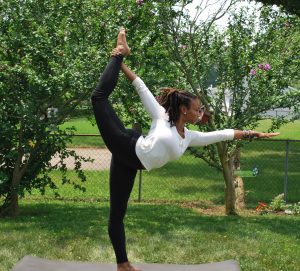Yoga does more than improve flexibility. As a useful tool for relieving stress and managing pain, it can have benefits for psoriasis and psoriatic arthritis.

If the word yoga brings to mind visions of someone twisted into an impossible pose, it’s time to rethink that notion. There are a variety of types of yoga that can be gentle and supportive of mind-body health, and which may have benefits for people with psoriasis and psoriatic arthritis.
Yoga is a safe and effective way to increase energy and reduce aches and pains. According to the Arthritis Foundation, yoga has been shown to promote positive emotional health: You can use it to relieve stress, increase mental awareness, and reduce anxiety and irritability. That makes yoga a great tool for managing the stress and persistent pain associated with psoriatic arthritis.
Before you grab a mat and jump in with both feet, though, it’s important to determine the right style of yoga for your level of ability, and then to find a knowledgeable, certified yoga instructor to help you create a yoga regimen.
Choosing the Right Yoga for Pain Management
According to the Johns Hopkins Arthritis Center, the following types of yoga are usually suitable for most people with arthritis:
Integral Founded by Swami Satchidananda, this gentle style of yoga focuses on poses, breathing, chants, and meditation.
Iyengar Founded by B.K.S. Iyengar, this style of yoga uses props such as cushions, blankets, blocks, and straps to modify poses based on individual need, making it well suited for all ability levels. Precise body alignment is encouraged through slow, deliberate poses and breathing.

Kripalu (stage one) Founded by Amrit Desai and called the Yoga of Consciousness, Kripalu is taught in three stages. Stage one is suitable for most people with arthritis and focuses on learning poses and connecting with your body in order to discover your abilities.
Sivananda Founded by Swami Vishnudevananda and similar to Integral yoga, this approach adds dietary restrictions, scriptural study, and meditation.
Viniyoga Founded by Sri T. Krishnamacharya, this gentle, healing style of yoga is commonly utilized as a therapeutic tool. Yoga teachers who practice this type of yoga undergo extensive training to learn how to create individualized plans that are tailored to where the student is in the moment. The regimen changes as your body and needs change.
Yoga and Psoriatic Arthritis
Yoga is not simply a stretching activity. Like many traditional forms of exercise, the physical poses of yoga can increase muscular strength, promote balance, improve flexibility, and enhance cardiovascular health, all important components of an exercise program if you have psoriatic arthritis, explains Natalie E. Azar, MD, clinical assistant professor of medicine in the division of rheumatology at NYU Langone Medical Center in New York City.
Because psoriatic arthritis affects the joints, particularly the shoulders and hips, hip-opening poses — as well as those that focus on range of motion, flexibility, balance, and strength training — should be part of your plan, Dr. Azar says based on her clinical experience.
But don’t just go to the first class you find at your local health club. Not all yoga classes are created equal, and some are better suited for a person with psoriatic arthritis than others.
Janet O’Faolain, YTRX, a certified yoga instructor and reflexologist in Los Angeles, suggests seeking private instruction before joining group classes in order to develop a practice that’s best suited for your needs, wants, and conditions. “This is how yoga was originally taught: from master to student,” she says. If private instruction is not an option, look for gentle beginner or restorative classes to start.
When choosing what class to attend, also take a close look at the person leading the class. O’Faolain encourages people to check out the Yoga Alliance website or look for members of the International Association of Yoga Therapists and then ask specific questions about their education and professional experience to make sure they are going to be able to meet you where you are.

